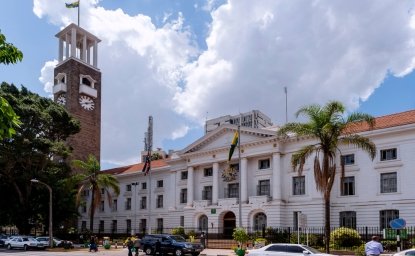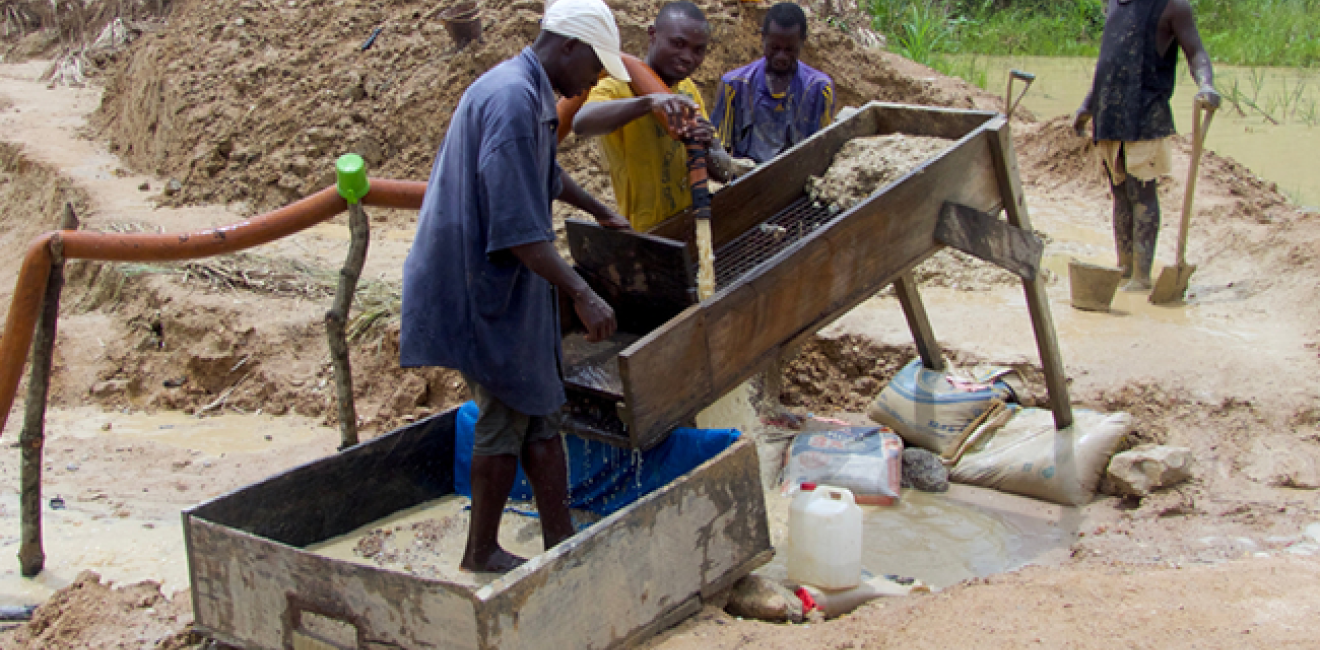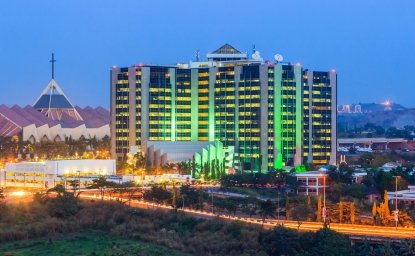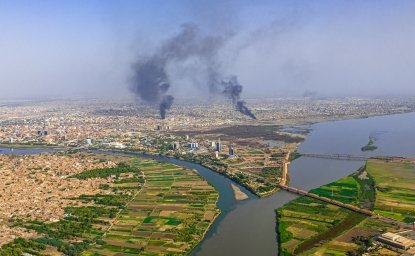
A blog of the Africa Program
From toilet paper and baby formula shortages to skyrocketing global gas prices, the past two years presented challenges across the globe. In particular, the COVID-19 pandemic and the Russia-Ukraine War have highlighted the interconnectedness of the world's economies, especially regarding resource management and supply chains. It has also exposed, more than ever before, who benefits and suffers in these interconnected trade deals. As the most natural resource-rich continent on the planet, yet widely considered the most impoverished, this disconnect raises the question: where is Africa’s wealth going?
To examine this question, I will be looking at just one of Africa’s abundant and valuable resources—diamonds. To do so effectively, one should put Africa’s poverty issue into perspective. In 2018, the average poverty rate in Sub-Saharan Africa was approximately 41 percent, and of the world’s 28 poorest countries, 27 were in Sub-Saharan Africa. While it must be acknowledged that some progress has been made, the COVID-19 pandemic has stalled many efforts at advancement, even showing regression to poverty levels in most cases.
“Blood Diamond” Supply Chain
Diamonds represent an industry worth over $81.4 billion per year, with 65 percent of global production sourced from Africa. While they are a high-end, luxury resource, the process of obtaining diamonds from the earth is not nearly as glamorous. Human rights violations plague the diamond mining industry and commonly include child labor. Conditions are often atrocious with labor-intensive and hazardous work, scandalously low pay, violent management or threat of violence, and harrowing impacts on nearby communities. The mining industry is also riddled with conflict, giving rise to the term “blood diamonds” in the early 2000s. This refers to diamonds produced from war zones, fuel conflicts, and even help fund armed groups or rebellions.
Examining the diamond supply chain starts at the source—the miners themselves. While sources and numbers vary from country to country, the pay is often nearly negligible, whether child or adult. Nearly a million African miners make a wage of less than $1 per day. Within diamond mining, there are two main types of mines: industrial mines and artisanal/small-scale mines. Artisanal mining operations are often less formal and therefore less regulated, making it harder to crack down on illegal mining operations or enforce efforts to minimize human rights and working condition violations.
The supply chain begins to obscure from the mines as it travels and crosses multiple borders through the various stages of development towards its final product. Put simply—these mining operations feed into traders or trading hubs. Two of the top trading hubs in the world are Belgium and the United Arab Emirates (UAE), with the latter overtaking Belgium as the leading rough diamond trading hub in 2021. According to the CEO of Dubai Multi Commodities Centre, $22.8 billion of rough diamonds were traded through UAE in 2021 alone. Although African diamonds do not account for the entirety of that figure, the disparity from $22.8 billion to $1 per day is staggering. If not the laborers, who else benefits from that profit margin? Presumably, it would be the owners of the mines and the government from which the diamonds originate. Furthermore, if the governments are not properly distributing and regulating these profits, I believe that it should fall to the international market to implement and enforce such regulations through demands for transparency and ethical sourcing.
It is at these trading hubs that the Kimberley Process Certification Scheme (KPCS) is enacted and issued. Implemented in 2003, the Kimberley Process Certification Scheme (KPCS) is an active international safeguard against blood diamonds—or conflict diamonds—with the goal of increasing transparency around diamond sourcing. The KPCS is one of the only existing international regulations on the diamond trade—any other regulations are up to each nation to determine. However, the term “conflict diamond” within the KP certification process only qualifies diamonds that have benefitted or contributed to rebel movements, which vastly limits the scope of what might conventionally be considered “conflict.” For example, the KP does not consider human rights violations within the mines or environmental impacts in its evaluation, which are certainly blind spots in its mission to “clean up” the diamond supply chain.
In addition, having the KPCS occur at this stage means that many domestic actors are missed in its evaluation. Since these trading hubs are often international and not located internally in the country of the diamond’s origin, it is the trading hub country that is listed as the exporter. This leaves many loopholes and missed steps within the KP certification process, so its stamp of approval is not nearly as comprehensive and trustworthy as it should be. This also obscures the traceability of the diamonds, so many major diamond outlets are not even sure where or what mines the diamonds they are selling come from.
Post KP certification, the diamonds enter what is called the midstream and downstream portion of the supply chain. This includes cutting, polishing, manufacturing, and consumer and retail sales. This process occurs globally, and diamonds often go through each step of these processes in different countries, changing hands and borders often, which can contribute to traceability difficulties.
Botswana’s Success Story
The diamond mining industry represents more than 40 percent of Botswana’s GDP and 90 percent of its exports. Given this, one might expect Botswana to be a victim of the “natural resource curse,” however, it is ranked among the top five highest GDPs per capita and the top five most democratic countries in Africa. Botswana has been largely able to achieve this success through strategic programs and policies, including within the diamond supply chain process.
One such contributor is their partnership with DeBeers, whom since the discovery of major diamond reserves in Africa, has “entered into a 50-50 joint venture with the government…[and has] also sold the government a 15 percent stake in the company,” displaying a true partnership rather than exploitation. The company also prides themselves on their corporate social responsibility, demonstrated through the significant gesture of closing its major diamond sorting facility in London and opening a new one in Gaborone, creating local employment opportunities and providing the opportunity for Botswana diamonds to remain in Botswana for a larger portion of the supply chain process. The company is very selective about its sourcing and provides a guarantee that 100 percent of the diamonds they sell are “conflict-free.”
Another factor in Botswana’s success story further displays the country’s commitment to transparency and fair mining practices. The Botswana government is lobbying to create a new, permanent headquarters for the Kimberley Process in-country. In the words of Botswana’s President Masisi, “We have everything to lose if diamonds are badly managed…we have used everything we’ve got from diamonds for schools, for roads, for medicine, for developing our human resource[s].”
The Bigger Picture
To ensure that African countries experience the full benefit of their natural resource wealth, change needs to first be demanded and enforced at the top of the supply chain. Like DeBeers, corporations worldwide should closely examine their supply chains to ensure that they are sourcing from mines and drill sites that pay their employees living wages, provide safe working conditions, and prevent child labor where possible. However, it should be noted that in some cases, outlawing child labor outright may do more harm than good at this point, given that many families rely on additional sources of income. In addition, corporations should begin requiring increased transparency from trading hubs and “middle-men” in the supply chain. Change at the beginning of the supply chain will be easier made and enforced if specific finished products can be traced back to their origin.
These oversights throughout the diamond supply chain are echoed in the industries of Africa’s other abundant natural resources, including: platinum, cobalt, phosphate, gold, copper, coal, iron ore, lead, uranium, petroleum, natural gas, etc. While there are successes such as Botswana's diamond industry, some countries, unfortunately, face challenges with government corruption or instability. These elements can contribute to why profits made in the natural resource sector are lost or not reinvested in the actual laborers or improved working conditions.
Taylor Laube-Alvarez was the Director's Office Intern at the Wilson Center Africa Program for the Summer 2022 term (May-August). She is currently a student at the University of Minnesota, pursuing a bachelor's degree in Global Studies and Biology, Society, & Environment.
Photo Credit: A group of men washing the soil and working the land in search of diamonds in the artisanal mines of Sierra Leone by Belen B Massieu/Shuterstock.com
The opinions expressed on this blog are solely those of the authors. They do not reflect the views of the Wilson Center or those of Carnegie Corporation of New York. The Wilson Center's Africa Program provides a safe space for various perspectives to be shared and discussed on critical issues of importance to both Africa and the United States.
Author


Africa Program
The Africa Program works to address the most critical issues facing Africa and US-Africa relations, build mutually beneficial US-Africa relations, and enhance knowledge and understanding about Africa in the United States. The Program achieves its mission through in-depth research and analyses, public discussion, working groups, and briefings that bring together policymakers, practitioners, and subject matter experts to analyze and offer practical options for tackling key challenges in Africa and in US-Africa relations. Read more

Explore More in Africa Up Close
Browse Africa Up Close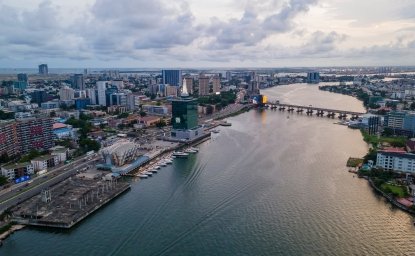
The Innovative Landscape of African Sovereign Wealth Funds
